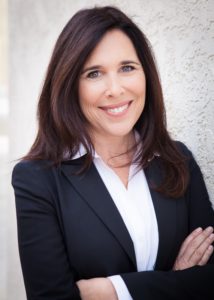 Knowledge Gaps on Breast Density and Breast Cancer Risk
Knowledge Gaps on Breast Density and Breast Cancer Risk
Robin Seitzman, PhD, MPH
Director of Education and Epidemiology Research, DenseBreast-Info.org
All breasts contain milk glands, fibrous tissue, and fat. The more glands and fibrous tissue, the denser the breasts. While normal and common, dense breast tissue both increases the risk of developing breast cancer, and for having that cancer go unseen on a mammogram. The denser the breasts, the greater these risks.
From a mammogram, breasts are assigned one of four breast density categories. Compared to women with the least dense breasts (fatty breasts), women with the densest breasts (extremely dense) are at about 4 times higher risk.1
A recent study2 showed that many women underestimate the risk associated with dense breasts. Of nearly 2,000 women in the study, 93% mistakenly believed that having a family history of breast cancer in a mother or sister was a stronger risk factor than having dense breasts. And, 65% mistakenly believed being overweight or obese was a stronger risk factor than having dense breasts. Having dense breasts increases risk similar to having a mother or sister with breast cancer, and more than postmenopausal overweight or obesity and other risk factors.3
Women’s healthcare providers also misunderstand breast cancer risk. A recent survey from DenseBreast-info.org4 reported that less than half of women’s healthcare providers understood proper use of breast cancer risk assessment tools. And only 19% knew that both mammography/tomosynthesis and MRI should be recommended for screening high-risk women over age 30. A prior study reported that just 29% knew breast cancer risk increases with increasing amount of dense tissue.5
Know your density. Know your risk. To find out if you have dense breasts, check the letter you received after your mammogram, or ask your health care provider or the facility where you had your mammogram. Other tests after your mammogram, including MRI, or contrast-enhanced mammography or ultrasound if an MRI is not possible, can detect breast cancer better in women with dense breasts. Talk to your doctor about whether one of these additional tests is right for you.
- McCormack VA, dos Santos Silva I. Breast density and parenchymal patterns as markers of breast cancer risk: a meta-analysis. Cancer Epidemiol Biomarkers Prev. 2006;15(6):1159-1169.
- Beidler LB, Kressin NR, Wormwood JB, Battaglia TA, Slanetz PJ, Gunn CM. Perceptions of Breast Cancer Risks Among Women Receiving Mammograph Screening. JAMA Netw Open. 2023;6(1):e2252209.
- Engmann NJ, Golmakani MK, Miglioretti DL, Sprague BL, Kerlikowske K. Population-Attributable Risk Proportion of Clinical Risk Factors for Breast Cancer. JAMA Oncol. 2017;3(9):1228-1236.
- Seitzman RL, Pushkin J, Berg WA. Effect of an Educational Intervention on Women’s Health Care Provider Knowledge Gaps About Breast Cancer Risk Model Use and High-risk Screening Recommendations. Journal of Breast Imaging. 2023;5(1):30-39.
- Seitzman RL, Pushkin J, Berg WA. Effect of an educational intervention on women’s healthcare provider knowledge gaps about breast density, breast cancer risk, and screening. Menopause. 2021;28(8):909-917.
